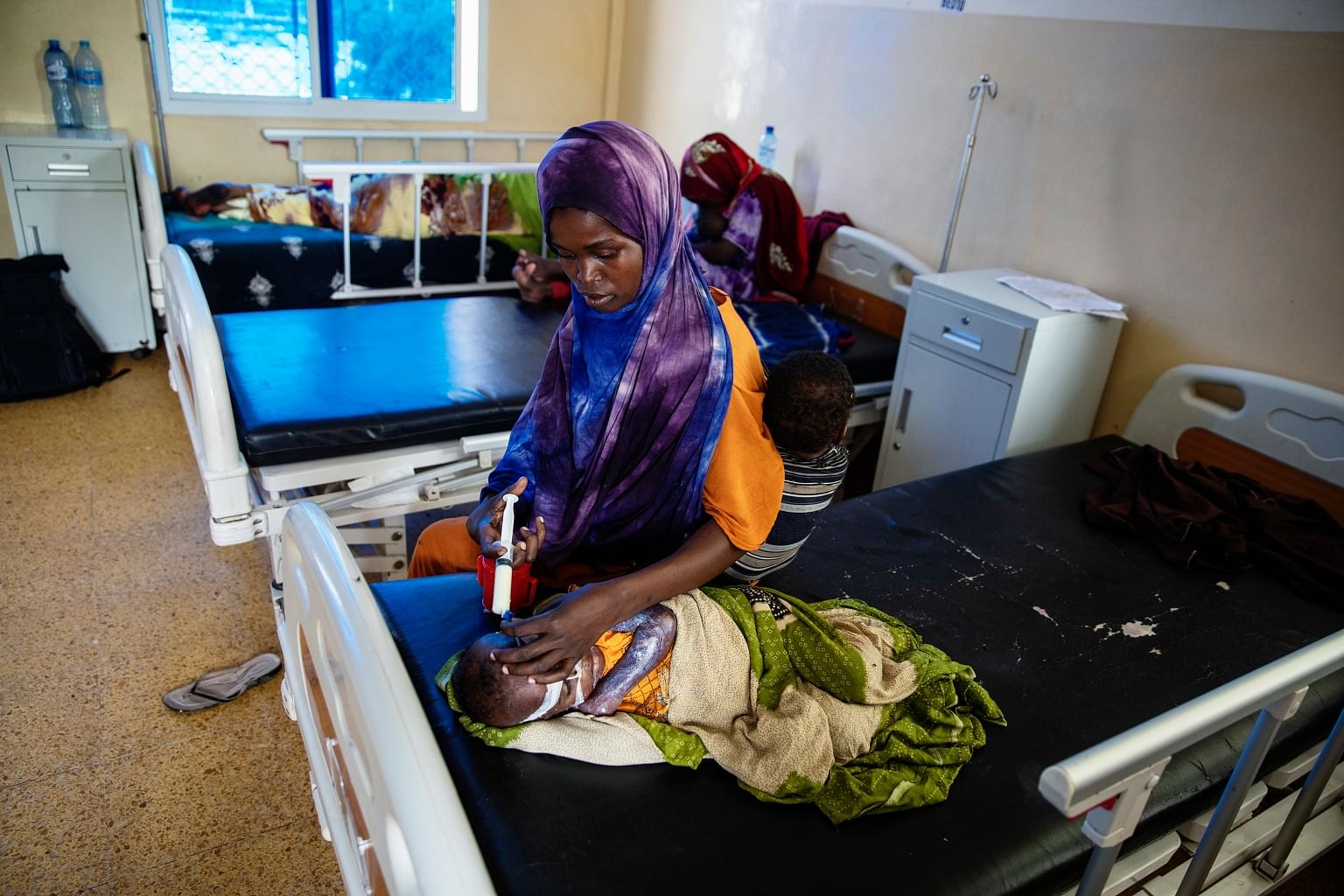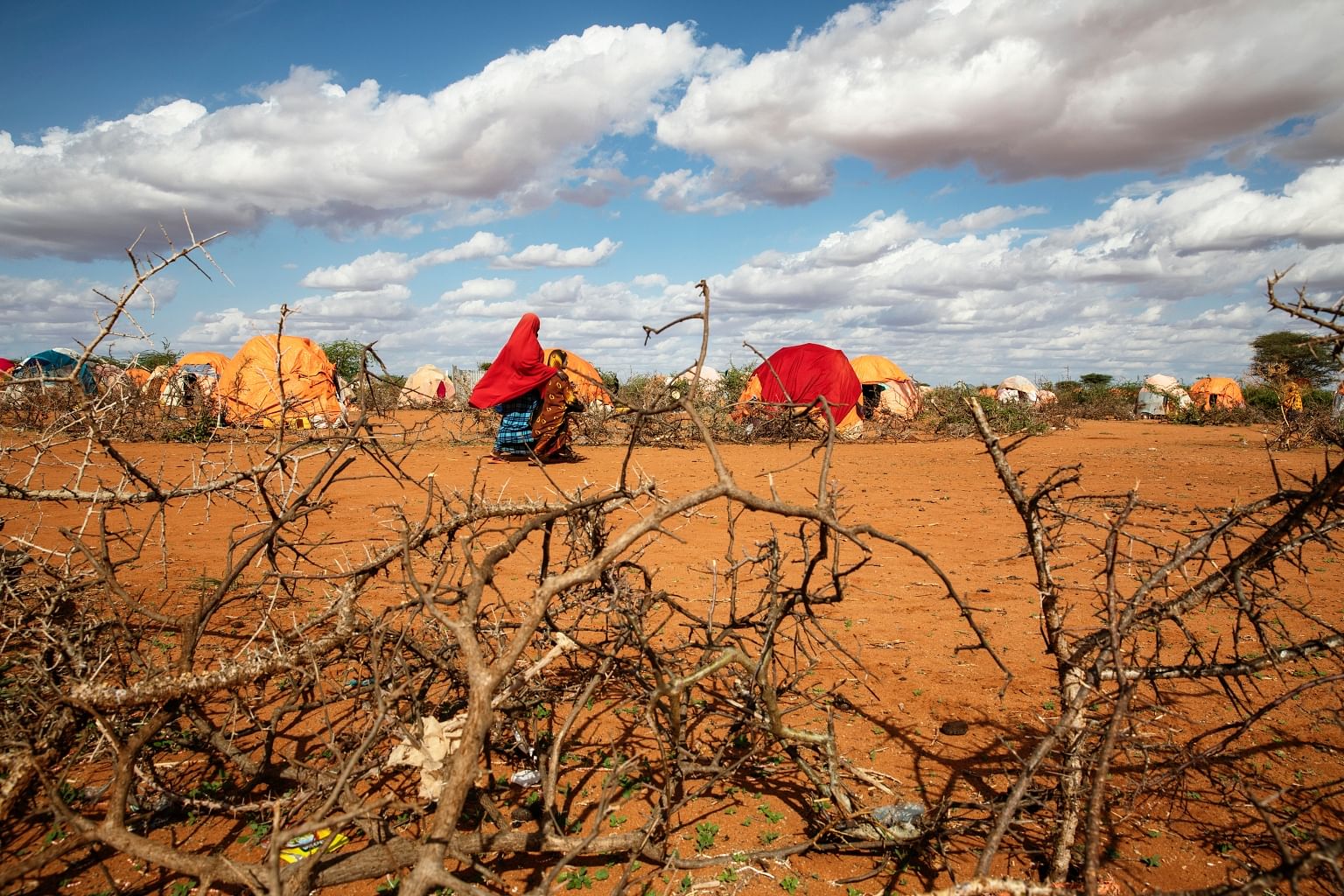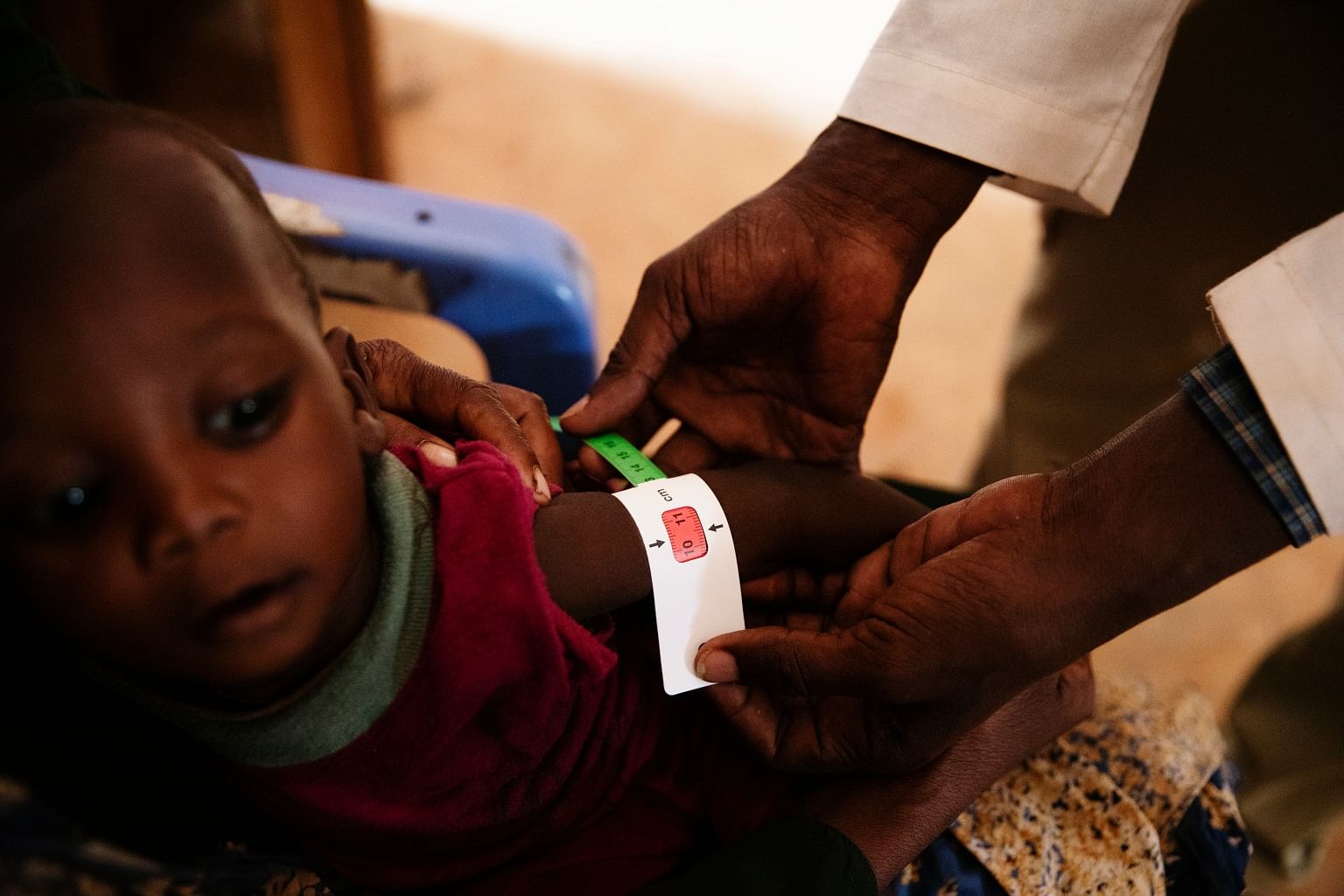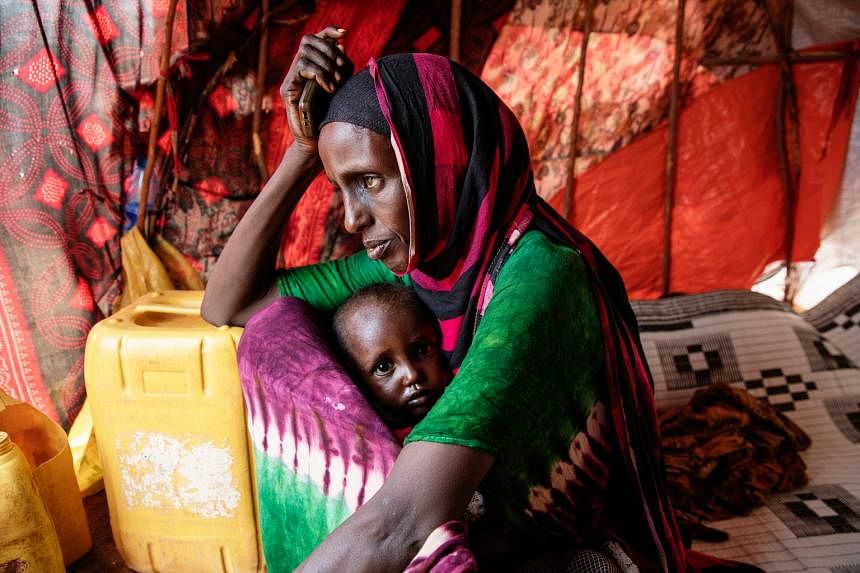DOOLOW, SOMALIA - When her crops failed and her parched goats died, Hirsiyo Mohamed left her home in southwestern Somalia, carrying and coaxing three of her eight children on the long walk across a bare and dusty landscape in temperatures as high as 37 deg C.
Along the way, her 3 1⁄2-year-old son, Adan, tugged at her robe, begging for food and water. But there was none to give, she said. "We buried him, and kept walking."
They reached an aid camp in the town of Doolow after four days, but her malnourished 8-year-old daughter, Habiba, soon contracted whooping cough and died, she said.
Sitting in her makeshift tent last month, holding her 21⁄2-year-old daughter, Maryam, in her lap, she said, "This drought has finished us."
The worst drought in four decades is imperiling lives across the Horn of Africa, with up to 20 million people in Kenya, Ethiopia and Somalia facing the risk of starvation by the end of this year, according to the World Food Program.
Russia's invasion of Ukraine is exacerbating the situation, cutting off most of the wheat imports that Somalia depends on, and sharply increasing the prices of fuel, food and fertiliser.
The threat of hunger across Africa is so dire that last week, the head of the African Union, President Macky Sall of Senegal, appealed to President Vladimir Putin of Russia to lift the blockade on exports of Ukrainian grain and fertiliser - even as US diplomats warned of Russian efforts to sell stolen Ukrainian wheat to African nations.
The most devastating crisis is unfolding in Somalia, where about 7 million of the country's estimated 16 million people face acute food shortages. Since January, at least 448 children have died from severe acute malnutrition, according to a database managed by Unicef.
Aid donors, focused on the crisis in Ukraine and the coronavirus pandemic, have pledged only about 18 per cent of the US$1.46 billion (S$2.02 billion) needed for Somalia, according to the United Nations' financial tracking service. "This will put the world in a moral and ethical dilemma," said El-Khidir Daloum, the Somalia country director for the World Food Program, a UN agency.
With the rivers low, wells dry and their livestock dead, families are walking or getting on buses and donkeys - sometimes for hundreds of miles - just to find food, water or emergency medical care.
Parents flow into the capital, Mogadishu, bringing their malnourished children to health facilities like Benadir Hospital, one of few in the country with a paediatric stabilisation unit. The beds on a recent visit were packed with bony babies with scaly skin and hair that had lost its natural colour because of malnutrition. Many of the children were also sick with illnesses like measles, and were being fed through nasal tubes and needed oxygen to breathe.
Mothers sat in the corridors, slowly feeding their children the peanut-based paste used to fight malnutrition. The price of this lifesaving product is projected to increase by up to 16 per cent because of the war in Ukraine and the pandemic, which made ingredients, packaging and supply chains more costly, according to Unicef.

At the hospital's cholera treatment unit, Adan Diyad held the hand of his 4-year-old son, Zakariya, as the boy's protruding ribs heaved. Diyad had abandoned his maize and bean fields in the southwestern region of Bay after the river ran low.
In Mogadishu, he settled at a crowded camp for displaced people with his wife and three children, where they had no toilet and not enough clean water. Without a job, he could not feed his family. Zakariya, usually chirpy, grew emaciated. The night before Diyad carried him into the hospital, he said he kept listening to his son's heartbeat to make sure that he had not died.
"He couldn't even open his eyes when I brought him here," Diyad said.
Diyad and his family are among the 560,000 people displaced by the drought this year. As many as 3 million Somalis have also been displaced by tribal and political conflicts and the ever-growing threat from the terrorist group al-Shabab.
In rural areas across south and central Somalia, danger and poor road networks have made it hard for authorities or aid agencies to reach those in need. The UN estimates that almost 900,000 Somalis live in inaccessible areas controlled by the Shabab - although aid workers believe those figures are higher.
Mohammed Ali Hussein, the deputy governor of the southern Gedo region, acknowledged that local authorities were often unable to venture out of areas they control to rescue those in need, even when they received a distress call.
Extreme weather events, some linked to climate change, have devastated communities, too, bringing flash floods, cyclones, rising temperatures, a locust infestation that destroyed crops, and, now, four consecutive failed rainy seasons.
"These crises just keep coming one after another," so people have not had a chance to rebuild their farms or herds, said Daniel Molla, the chief technical adviser on food and nutrition for Somalia at the UN Food and Agriculture Organization.

Those uprooted by the drought are arriving in towns and cities where many are already straining to afford food.
Somalia imports more than half of its food, and the poor in Somalia already spend 60 per cent to 80 per cent of their income on food. The loss of wheat from Ukraine, supply-chain delays and soaring inflation have led to sharp rises in the prices of cooking oil and staples like rice and sorghum.
At a market in the border town of Doolow, more than two dozen tables were abandoned because vendors could no longer afford to stock produce from local farms. The remaining retailers sold paltry supplies of cherry tomatoes, dried lemons and unripe bananas to the few customers trickling in.
Some of the shoppers were displaced people with food vouchers from aid groups, worried about the rising food prices.
Traders like Adan Mohamed, who manages a juice and snacks shop, say they had to raise their prices after the costs of sugar, flour and fruits soared. "Everything is expensive," said Mohamed, blending pineapples imported from Kenya. And with wages relatively unchanged, many Somalis said they have cut back on meat and camel milk. More than 3 million herd animals have perished since mid-2021, according to monitoring agencies.
The drought is also straining the social support systems that Somalis depend on during crises.
As thousands of hungry and homeless people flooded the capital, the women at the Hiil-Haween Cooperative sought ways to support them. But faced with their own soaring bills, many of the women said they had little to share. They collected clothes and food for about 70 displaced people.
"We had to reach deep into our community to find anything," said Hadiya Hassan, who leads the cooperative.
Experts forecast that the upcoming October to December rainy season will most likely fail, pushing the drought into 2023. The predictions are worrying analysts, who say the deteriorating conditions and the delayed scale-up in funding could mirror the severe 2011 drought that killed about 260,000 Somalis.
"There are scary echoes of 2011," said Daniel Maxwell, a professor of food security at Tufts University who co-wrote the book "Famine in Somalia."

For now, the merciless drought is forcing some families to make hard choices.
Back at the Benadir hospital in Mogadishu, Amina Abdullahi gazed at her severely malnourished 3-month-old daughter, Fatuma Yusuf. Clenching her fists and gasping for air, the baby let out a feeble cry, drawing smiles from the doctors who were happy to hear her make any noise at all.
"She was as still as the dead when we brought her here," Abdullahi said. But even though the baby had gained more than 1 pound in the hospital, she was still less than 5 pounds in all - not even half what she should be. Doctors said it would be a while before she was discharged.
This pained Abdullahi. She had left six other children behind in Beledweyne, about 200 miles (320km) away, on a small, desiccated farm with her goats dying.
"The suffering back home is indescribable," she said. "I want to go back to my children."

